The Opaqueness of the Met's Looking Glass
The annual Met Gala is the most anticipated of fashion red carpets, as celebrities and designers are challenged to create a look that matches the theme of that year’s fashion exhibition—curated by the Metropolitan Museum of Art’s Costume Institute in New York City. What usually advances as a showcase of creativity and talent was this year an unfortunate exoticization of Chinese culture, following the theme, “China: Through the Looking Glass.” Before the night began, the very name of the exhibition established China as an “other.” The evening then progressed in an impertinent display of poor costume choices that largely eclipsed the few tasteful designs, highlighting several designers’ careless and disconnected approach. The Poppy Wars The choice of poppy flowers to reflect China is slightly shocking, and worse, an utter lack of historical consideration. In Chinese culture, poppies are most significantly related to opium, which is extracted from a specific species of the flower. This is the same opium imported by the British that would eventually lead China to its grand defeat in the Opium Wars, flinging them into the infamous “Century of Humiliation,” when China was at the mercy of imperial powers. The choice of several designers to use poppies was presumably an unintentional oversight. However, this oversight reflects carelessness and an unfortunate lack of respect, resulting in a taunting reminder of Western tyranny and ironic wardrobe choices.
Anna Wintour in Chanel; courtesy @metmuseum
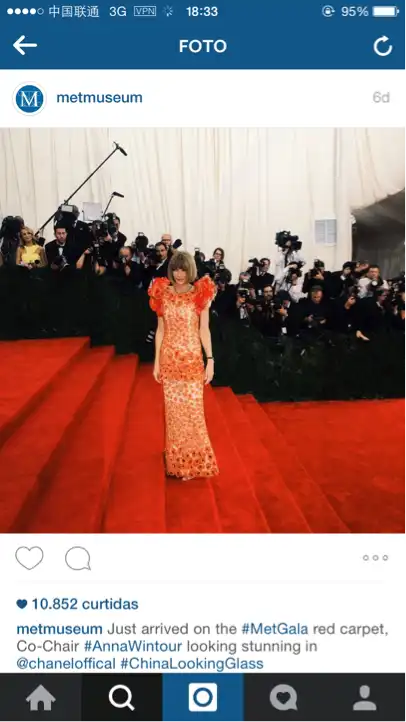
Jennifer Lawrence in Dior; courtesy @dior
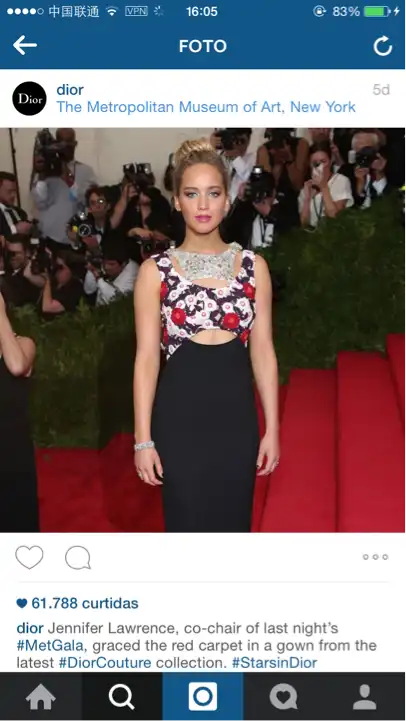
Poppy Delevigne in Marchesa; courtesy @marcheshafashion
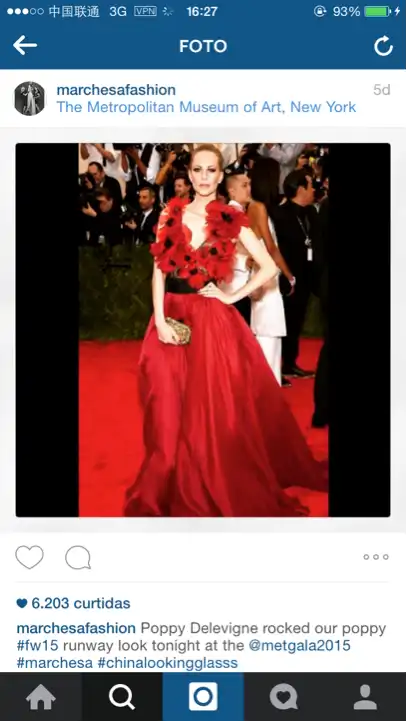
Is That a Kimono? Although the traditional Chinese hanfu is thought to have inspired the kimono, it is a predominantly Japanese garment. When the theme of the night is China, wearing a kimono is quite baffling and misses the mark completely. The assumption that Chinese means Oriental, which includes Japan, is quite unforgivable. This lack of sensitivity to different cultures is then perpetuated in the media and press, which use the words “China” and “Oriental” interchangeably. Lady Gaga has long been enamored with Japan, so there is no surprise in her choice to ask Alexander Wang to create a beautiful kimono-inspired ensemble. But Gaga and Wang’s decision to blur China and Japan is a grand disappointment. This is a duo that could have created something amazing and appropriate, but ultimately fell short.
Lady Gaga in Balenciaga; courtesy @balenciaga
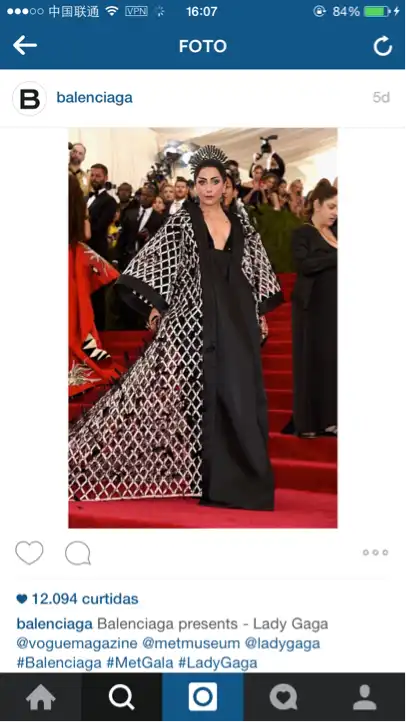
Georgia May Jagger in Gucci; courtesy @georgiamayjagger
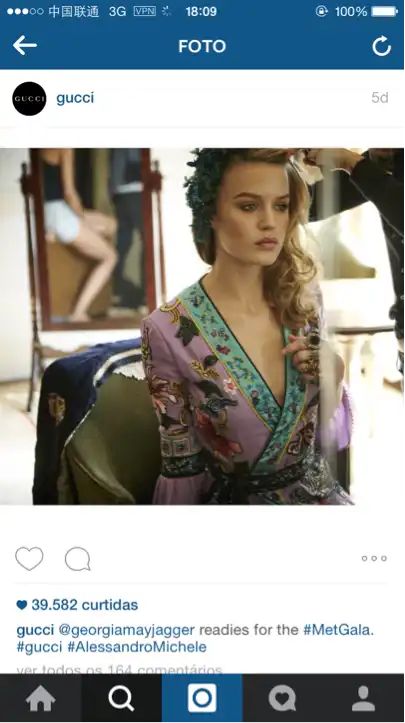
At Least it’s Chinese... While some dresses appeared to be a result of oversight or lack of familiarity with Chinese culture, others were completely tactless. Unsurprisingly, the night saw several attempts at emulating the traditional Chinese qipao, or something qipaoesque. There is a very fine line between an adaptation and a lascivious appropriation; regrettably, many of the qipao attempts fell on the latter side. Promiscuity is increasingly common in modern fashion, but an over-sexualized Chinese qipao should be expected from a cheap Halloween costume, not a respected designer.
Rita Ora in Tom Ford; courtesy @tomford
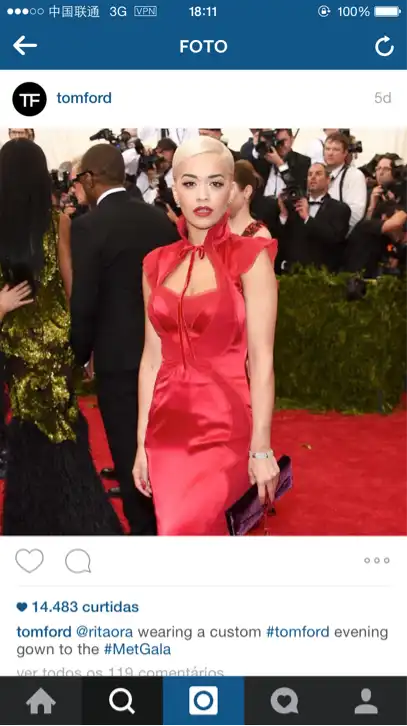
Apology Letter, Please Many questionable decisions paraded the red carpet, but Sarah Jessica Parker’s headdress took home the cake. This piece holds no substantial grounding in anything Chinese (or even Oriental for that matter) and is outright ridiculous. The level of disregard for Chinese culture involved in making this headpiece is difficult to grasp, and could easily be dismissed as foolishness. However, the headdress must be recognized for what it is—blatantly insulting, disrespectful, and humiliating.
Sarah Jessica Parker in Who Knows What, courtesy @voguemazine
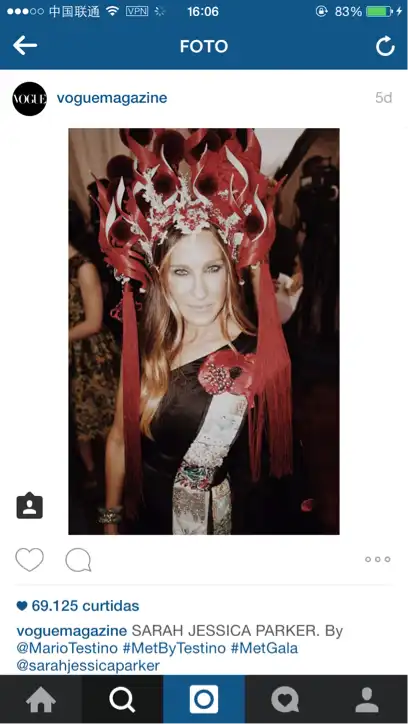
Doing It Right Thankfully, the night had a few saving graces. Kendall Jenner’s royal jade dress by Francisco Costa for Calvin Klein was both elegant and appropriate. The use of a high neck and structure of the dress as a gentle nod to the qipao was perfectly crafted, as was the draping of a low-hanging tassel. The laced sides and “side-boob” was the perfect amount of seduction, while still retaining integrity. The choice to recognize jade and subtly play upon these Chinese aspects created a dress that seems to be what the chairs of this event were hoping for.
Kendall Jenner in Calvin Klein; courtesy @calvinklein

The Big Picture Any of the night’s regrettable fashion decisions could be seen as unimportant, or a result of attention seeking antics and negligence. However, there is a far greater issue at hand in the flippant failure to properly portray a different culture. Andrew Bolton, Curator at the Costume Institute, writes in the exhibition catalogue, “‘China: Through the Looking Glass’ is not about China per se, but about a China that exists as a collective fantasy.” The very word “fantasy” as stated in the exhibition catalogue belies a grand lack of sensitivity. An event with this much exposure could have rectified years of misguided cultural appropriation, but the use of exoticizing language only further establishes China as an inferior “other.” The true concern is that millions of viewers and onlookers are completely unaware of the problematic implications this event brought forth. When influential celebrities and designers irresponsibly throw together outfits which they think represent “China”, this false image is then absorbed by the media and the public. Instead of recognizing China’s influence, the night has perpetuated stereotypes and cultural degradation as the norm.
This article was written by Enrique Menendez. Send an email to managing@oncenturyavenue.com to get in touch. Photo credit: Met Museum, Wikimedia Commons